Landscape Bed Spring Cleanup And A Variety Tour

The video included here provides an overview of our oldest landscape bed, including spring cleanup chores, tree & shrub pruning, and a look at several Dakota Pinnacle Birch trees removed and replacements. I encourage you to watch the video, but I have also included many photographs below that were used in the video as well as additional commentary on the varieties discussed.
Cutting back perennials and pruning trees and shrubs will pay big dividends in how your landscape looks each season. Late winter/early spring is the time to do it. As trees and shrubs grow and perennials mature, the maintenance tasks increase. On that note, man, did I plant a lot of plants over the last 14 years!
It's a labor of love, and I still enjoy all the chores that come with gardening. I'm so thankful for my health and how physically fit I am at the young age of 58. I attribute much of my health to how active gardening has kept me over the years.
When my wife and I first moved to this location, there was only one landscape bed on the property. The photo below shows how it initially looked. I immediately expanded it and over the years have added numerous other landscape beds.
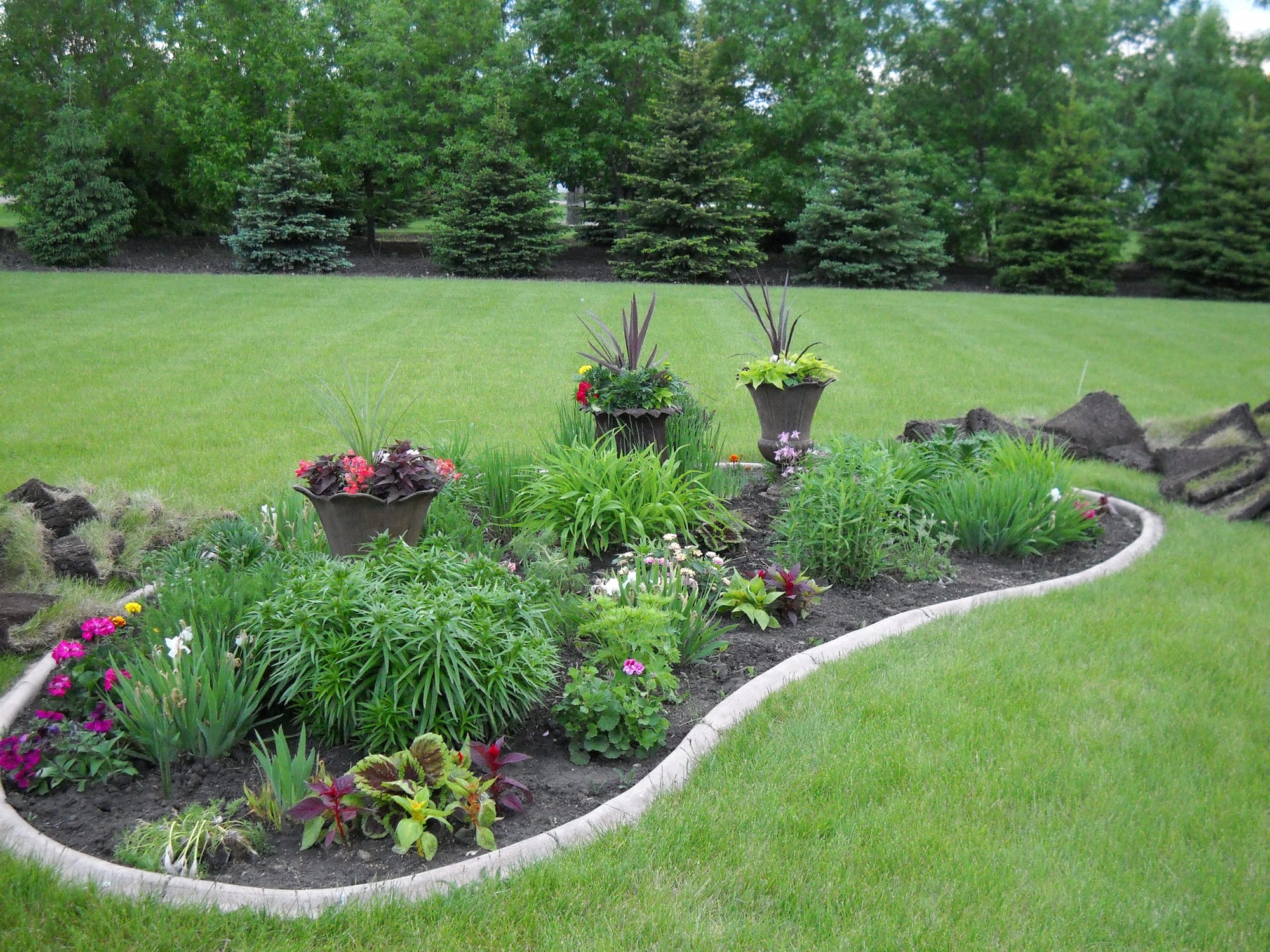
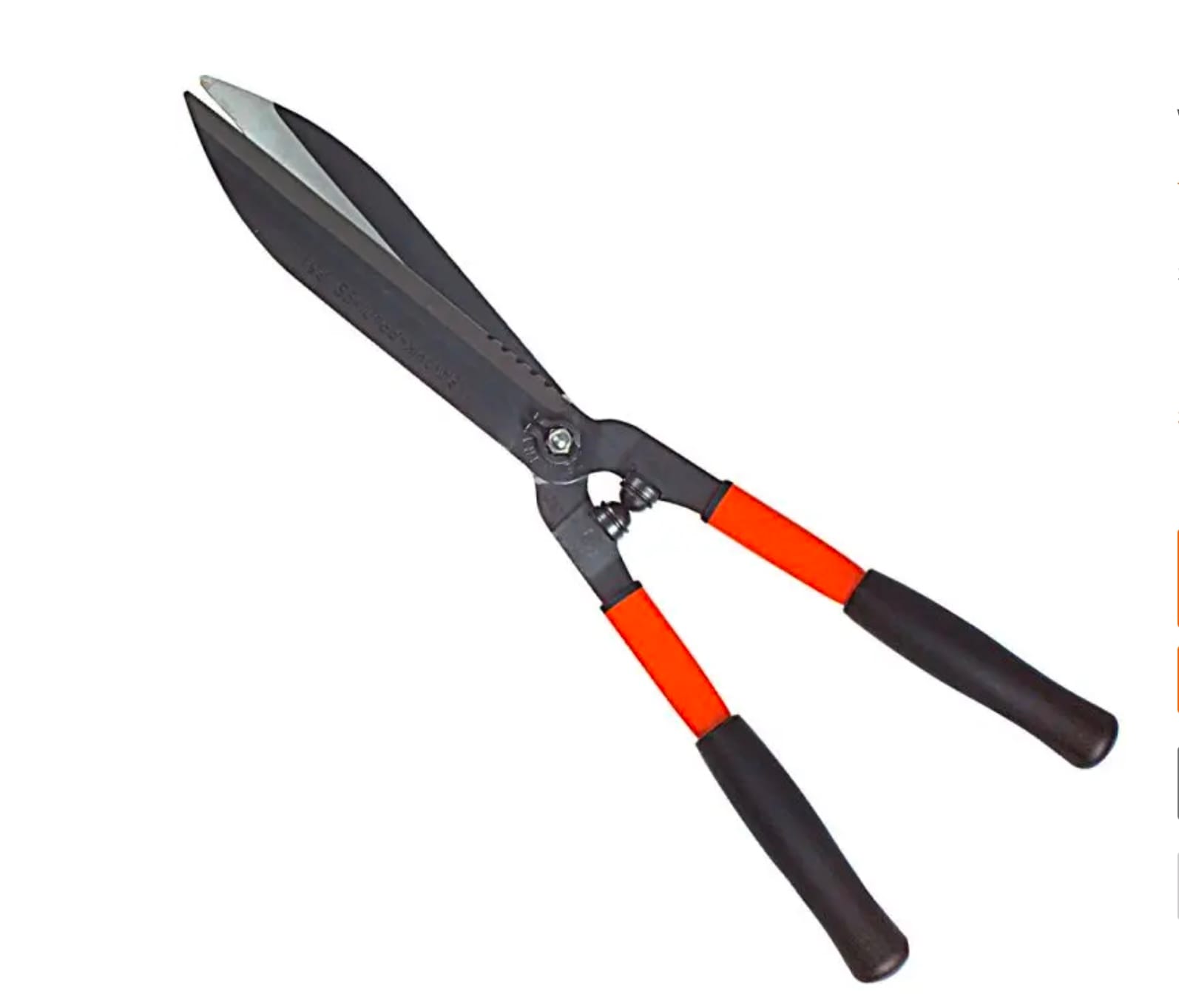
Bahco Hedge Shears - 23IN With 9-1/2IN Blade
Lightweight and durable. The last hedge shears you'll ever need.
Garden Hike is supported by its audience. When you purchase through links on this site, we may earn a small commission at no additional charge to you.
Initially, I tried to include the concrete edging in the now-expanded bed. But I was shooting for a more informal landscape with rock edging and natural raised contours, so I removed it. Concrete edging can look great in many landscapes, but it was not the "feel" I wanted in this setting.
The sod scrap piles you see in this photo were from a vegetable garden plot we developed. I rented a sod cutter and dumped the rolls here. I added several loads of topsoil over the top of the sod scraps to make it more even. I planted new trees, shrubs, and perennials in the clumpy mix, and everything has thrived except for the Dakota Pinnacle Birch trees.

Here's some photos of a few additional beds created, and many of the plants we have collected over the last decade. I now have hundreds of videos at my GardenHike YouTube channel. I am pleased to share many of the trees, shrubs, and perennials we enjoy on this platform.
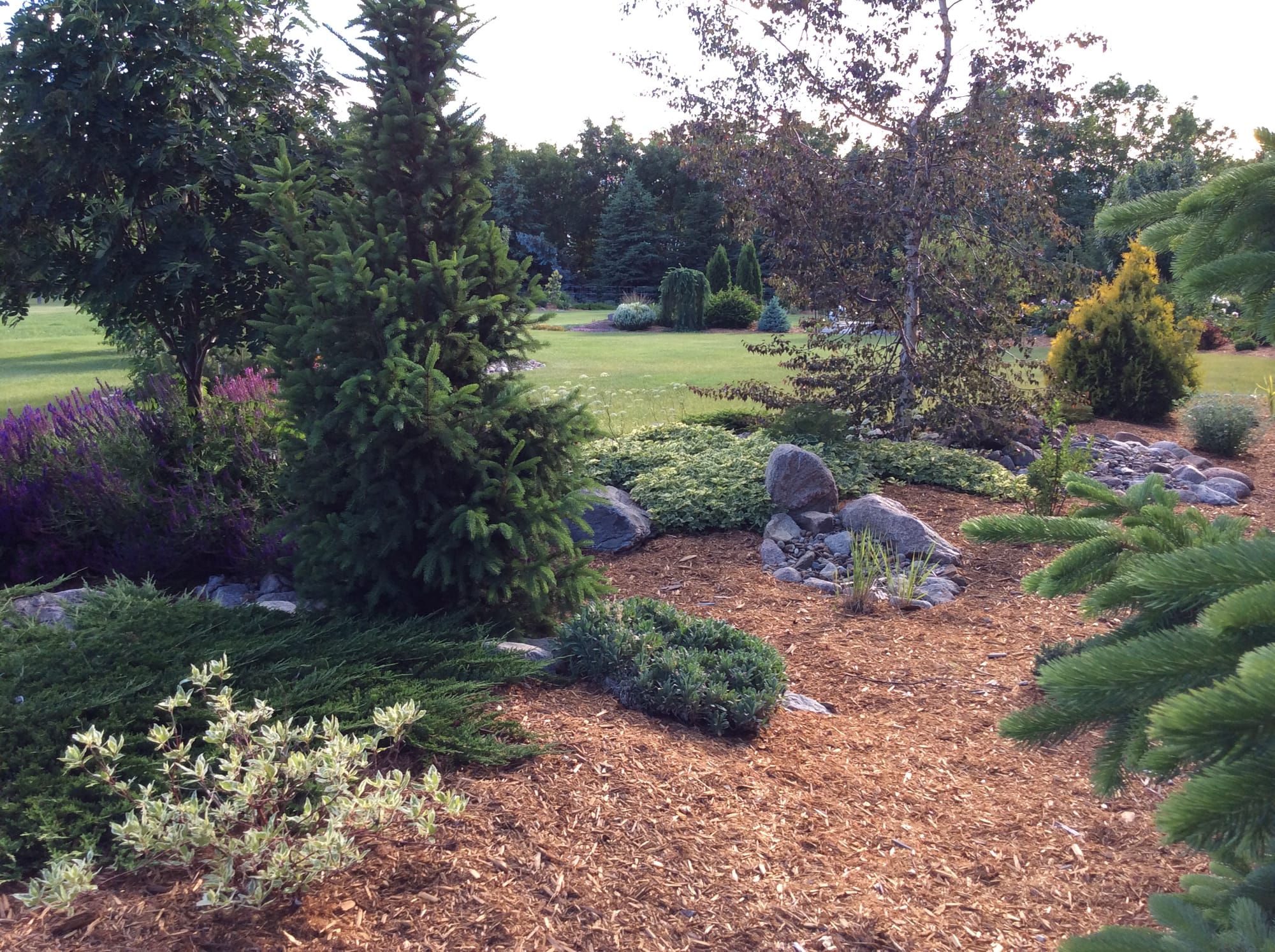
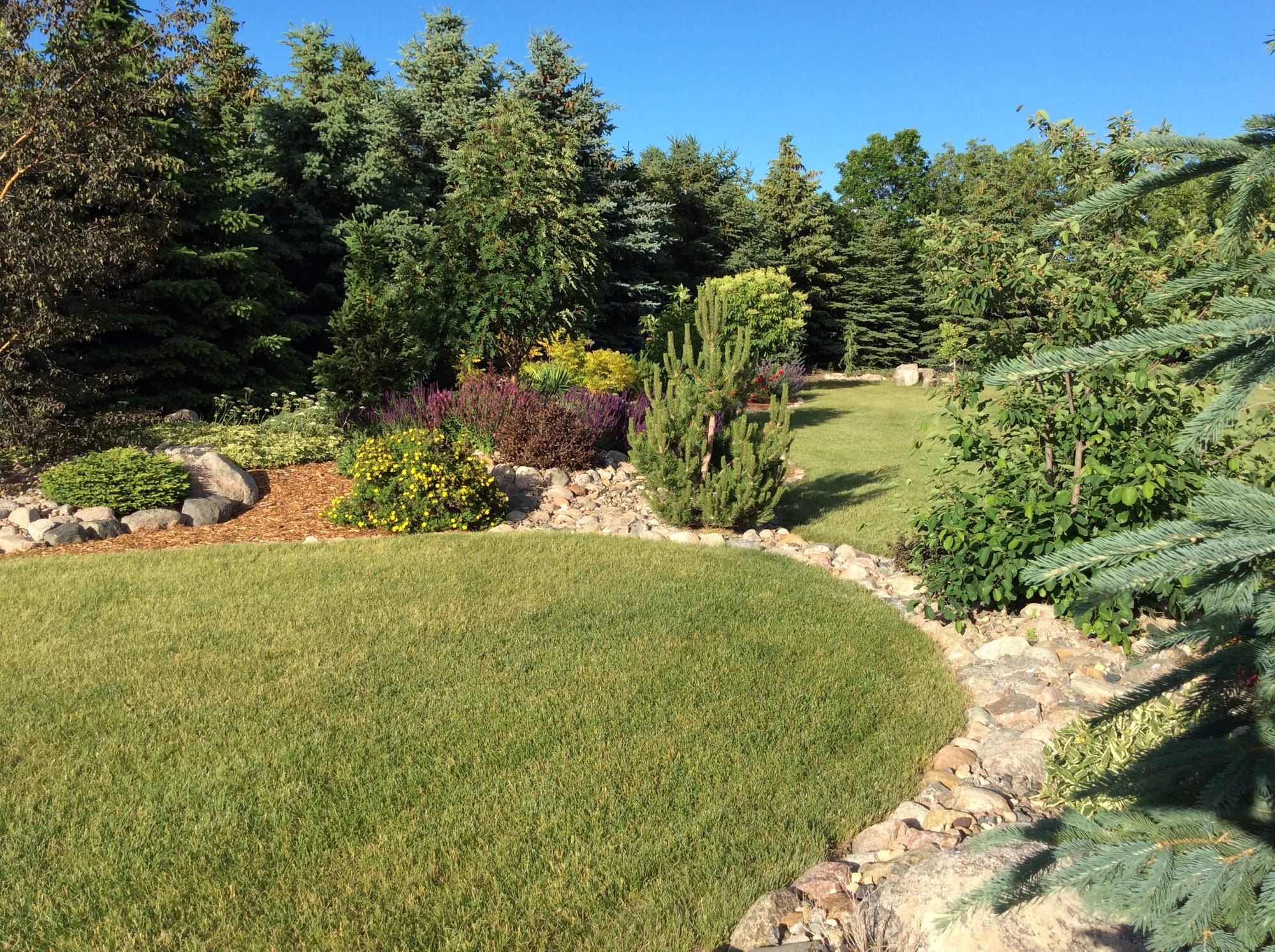
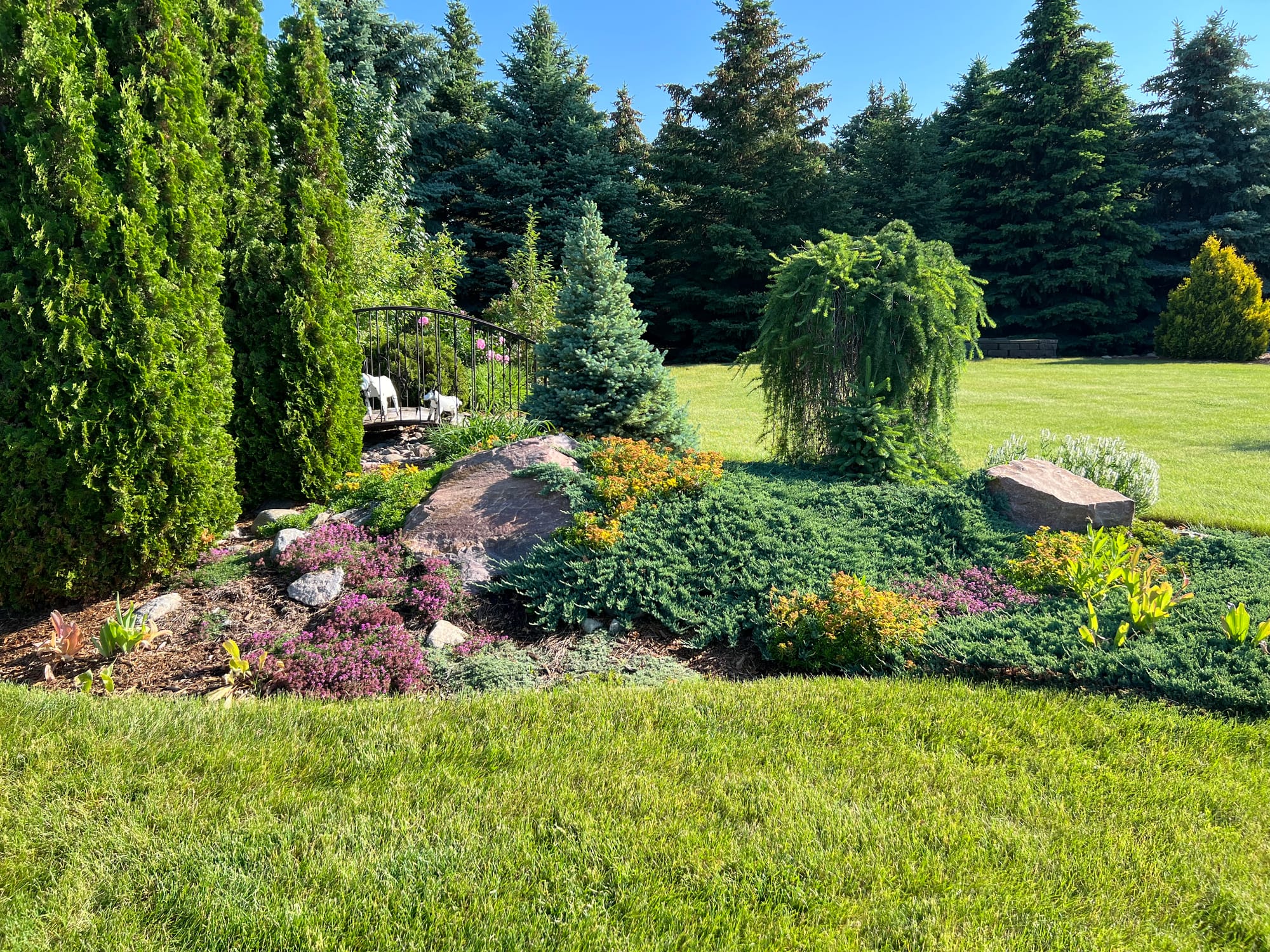
Additional Landscape Beds Created Over The Years
Plant varieties highlighted in the video:
Globe Blue Spruce, Picea pungens' Globosa', Zone 2-8)
This bright blue "dwarf"?? Colorado Spruce has exceeded its width growth estimates by at least double. It is labeled to reach 5' H x 6' W. This specimen is now over 10 feet wide. I keep the top pruned as it is normal for this variety to revert to a columnar plant. I'm excited to let it continue gaining width and plan on bringing out the rock edging to accommodate its size. There are many unique Colorado varieties, offering a wide range of shapes and sizes. The Colorado Weeping is another favorite and can be viewed in this video along with several other unique conifers.
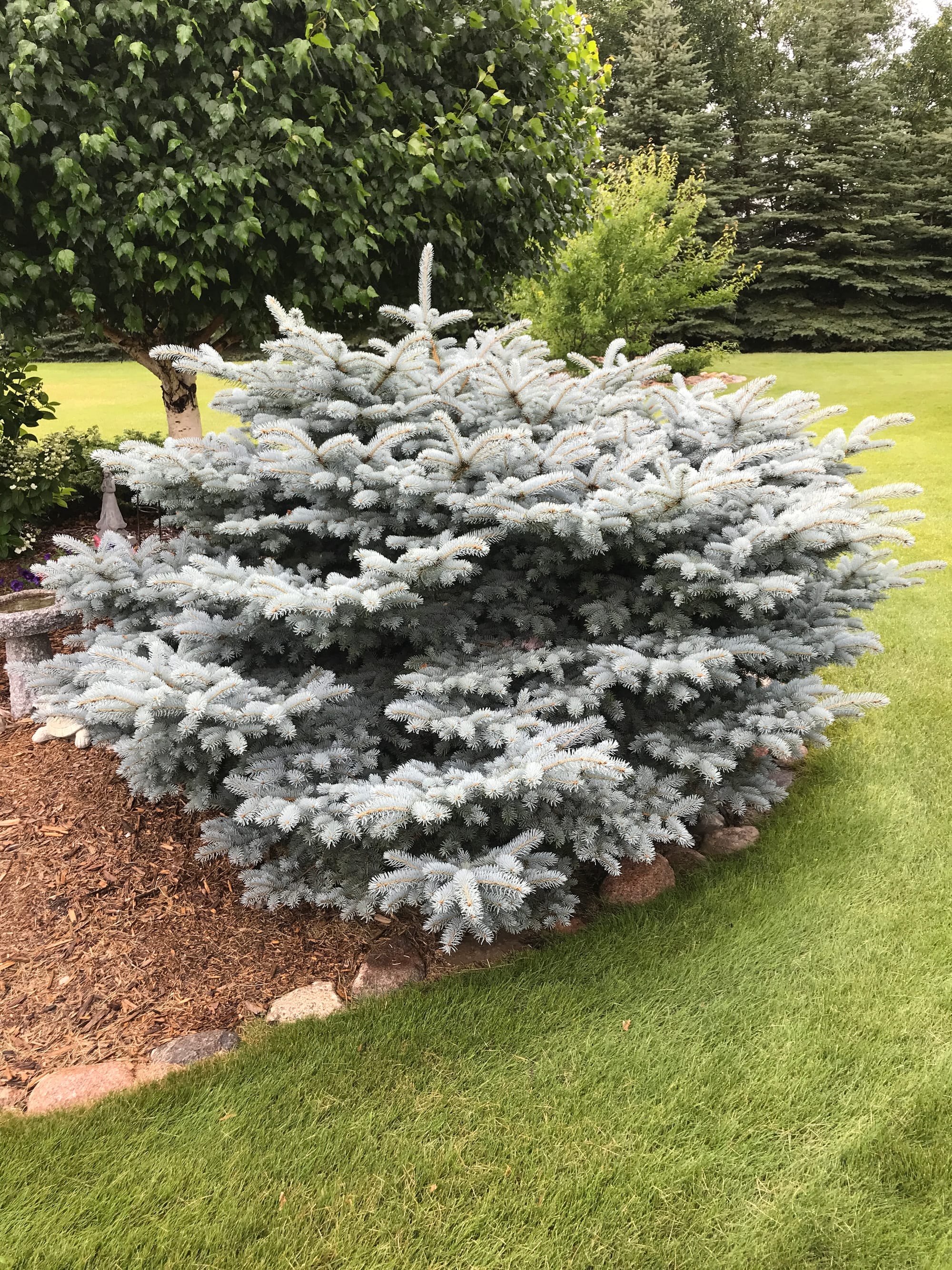
Neon Sedum, Sedum spectabile ‘Neon’, Zone 3-9
I like to leave Sedum flower heads on through the winter months. They offer excellent winter interest in combination with snowfall. The old stems are easy to cut back in later winter or early spring. The upright Sedum varieties like Neon can show early growth, especially if planted in rock beds that warm up more quickly. So cut them back in late winter if possible, as it can be more difficult if you are contending with new growth. You can read about other Sedum varieties here.
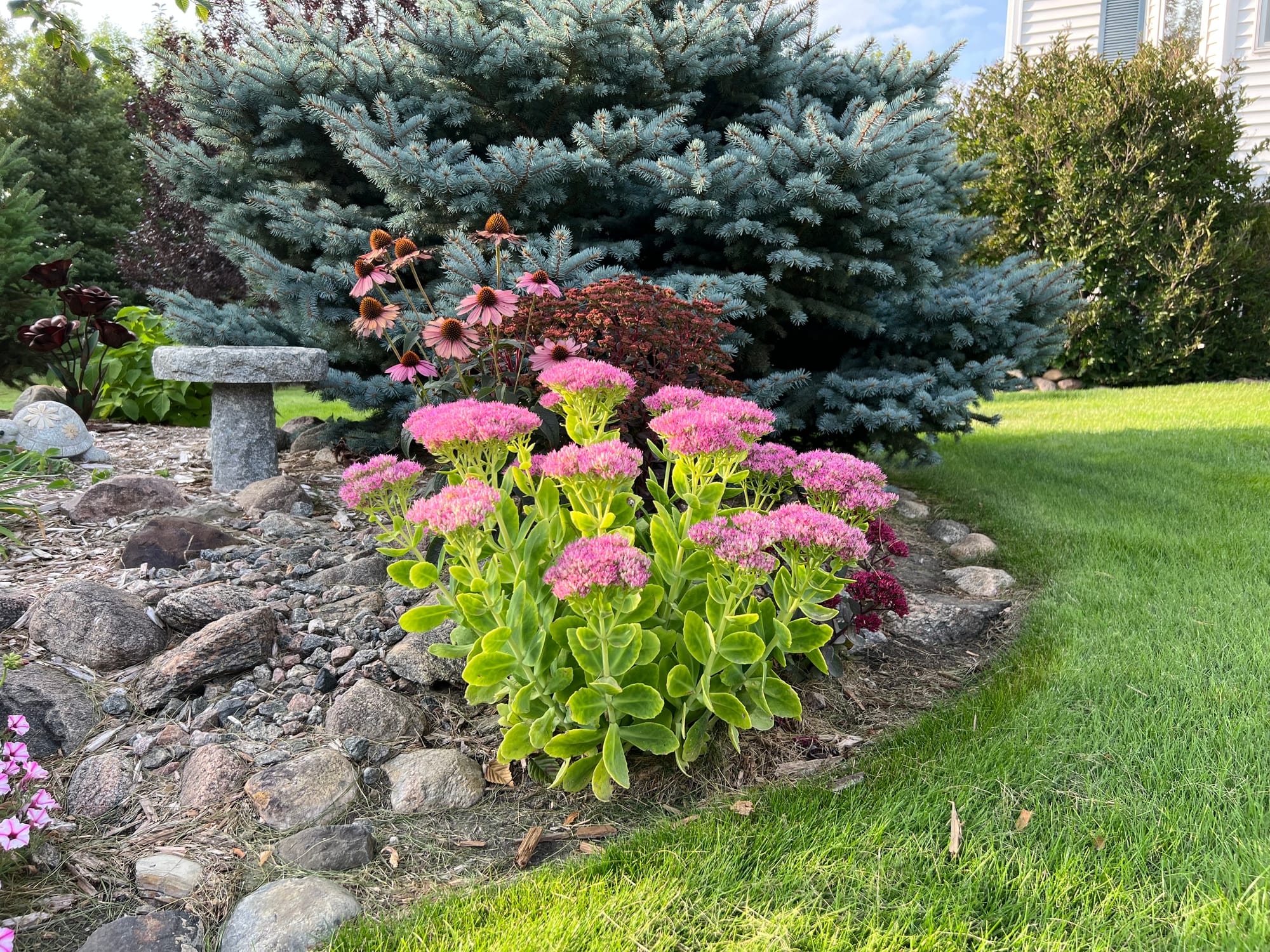
Calgary Carpet Juniper, Juniperus sabina 'Monna', Zone 3-7
I love how plants can remind us of our friends and family. We have many plants that have been gifts, trades, or just favorites of others we have known. I'm reminded of Marcy Pfliiger when I see Calgary Carpet Juniper. It was her favorite. She died recently in an unfortunate accident, so I'm glad we had this connection to remind me of her. It is one of the best low-growing Junipers you can plant, with a beautiful emerald green color and layering habit. It is very hardy, and I've never had any winter burning or pest problems.
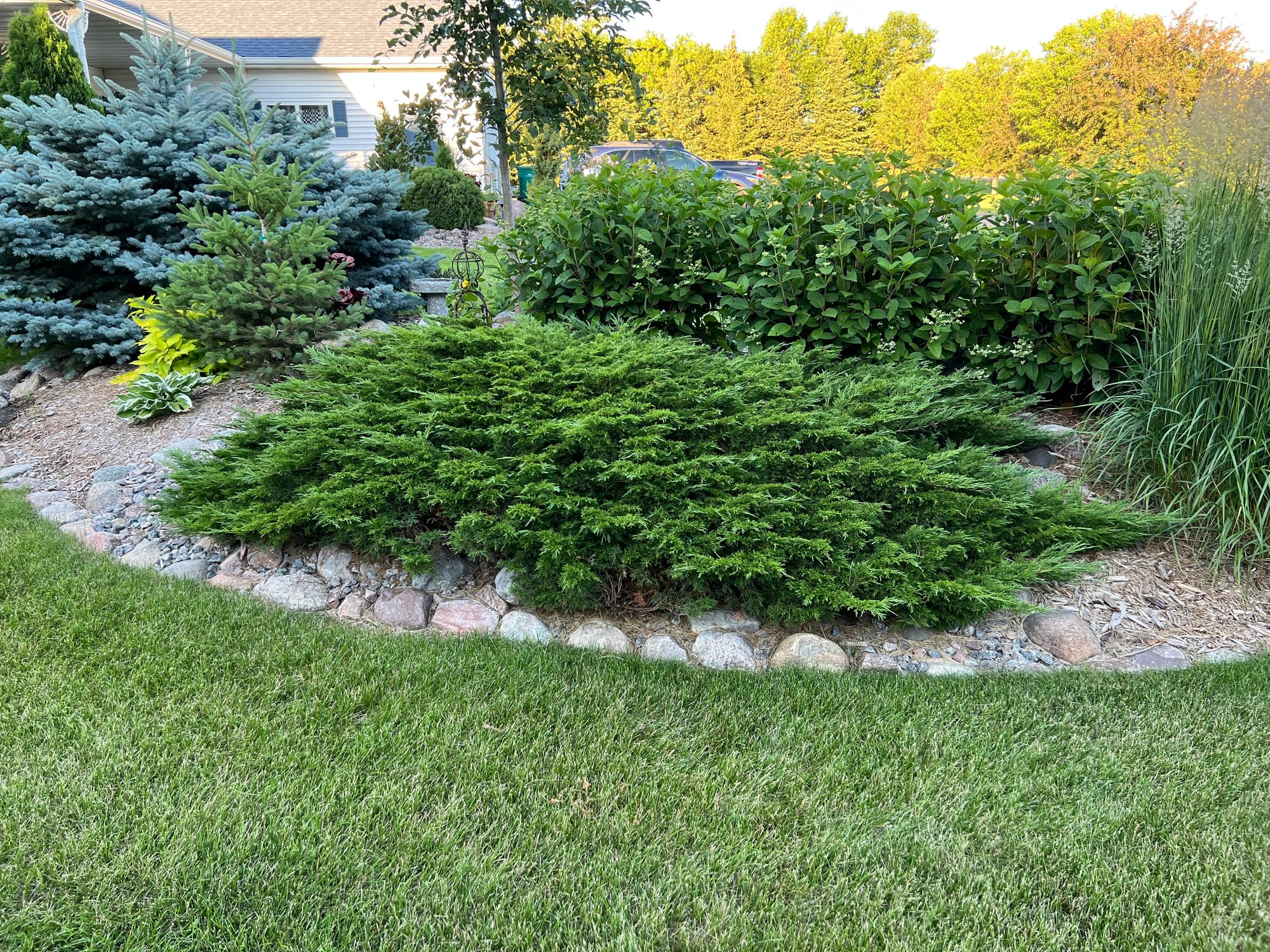
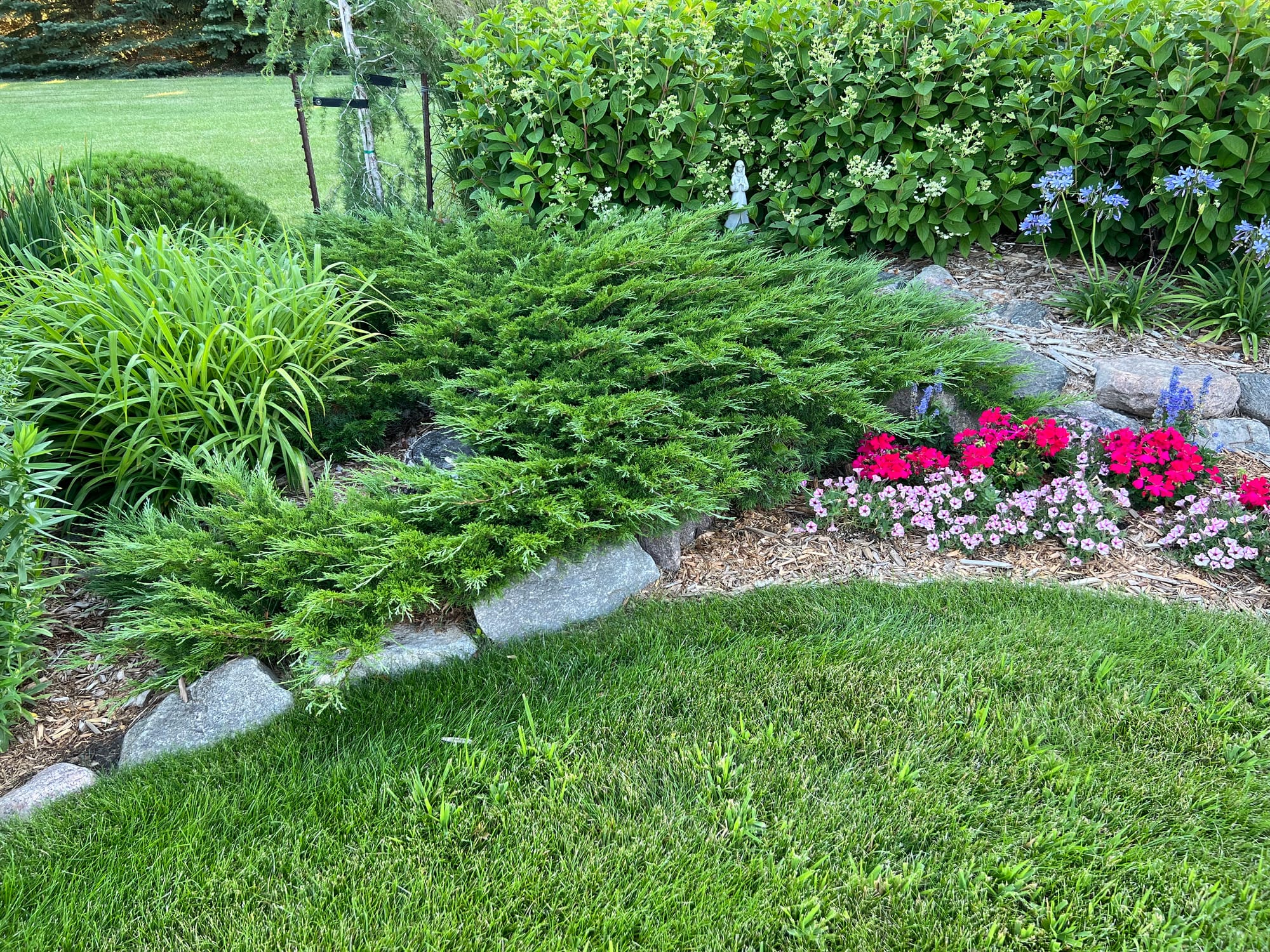
Calgary Carpet Juniper
Aster
Aster's are fall-blooming powerhouses! At least the Aster I am showing you here is. The video above shows some of the pollinators this perennial draws in each fall. Unfortunately, I don't know what variety of Aster this tall variety is. It is one of the original plants from the smaller bed shown earlier, and planted before we moved here. It's one of my favorite perennials in our gardens, and I look forward to the fall every year to see the bee activity on these beautiful flowers. Aster varieties are available in sizes ranging from 12" up to 4'. Make sure you check the label so you know what size you will be getting.
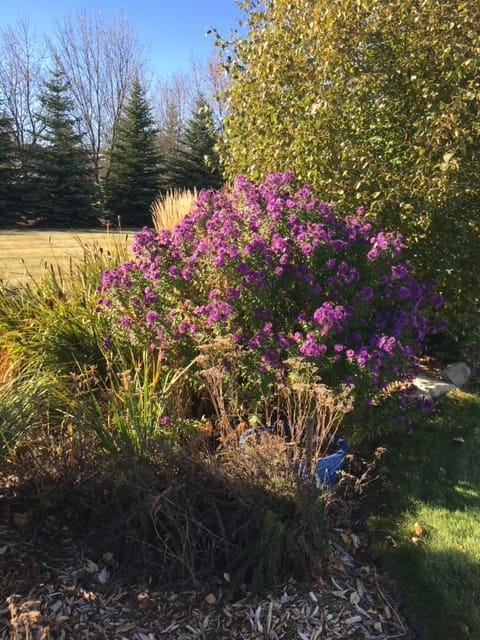
Strawberry, Fragaria
Birds likely seeded this strawberry patch from their droppings. It started as a tiny plant and has thrived in this location. It's an excellent ground cover. Occasionally, we enjoy a fresh strawberry, but the birds usually are first to the party.
Strawberries will also slow down in production as they age. It's important to till or divide the plants occasionally for new stolons and plants to form. I'm not planning on doing that here since my main goal is only an ornamental ground cover. But we definitely have source plants available when we are ready to start a new patch for production.
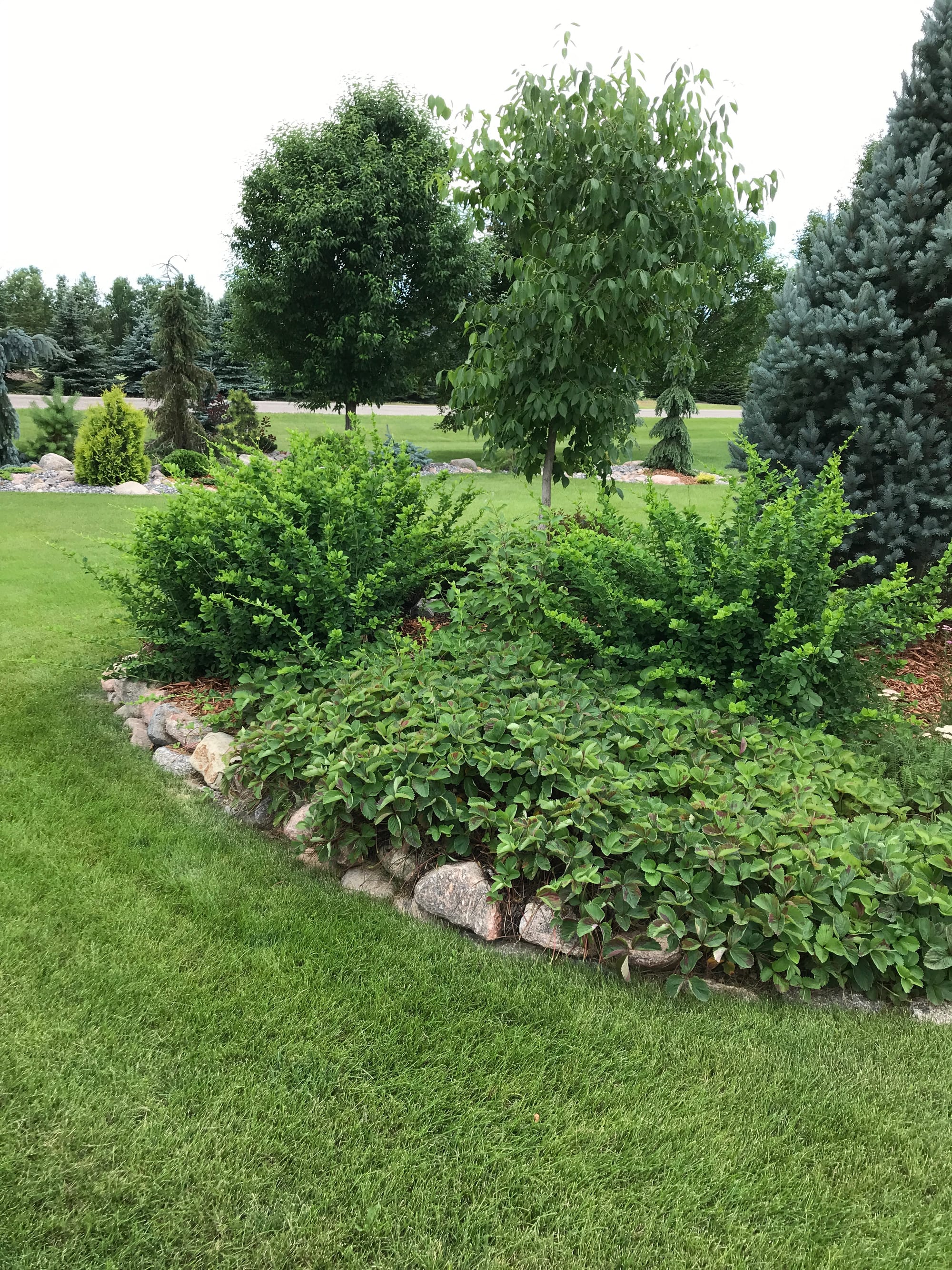
Emerald Carousel Barberry, Berberis 'Tara', Zone 4-7
I love the Emerald Carousel Barberry. A drawback for many folks is the thorns that come with Barberry shrubs. It has a wonderful yellow spring flower, a beautiful red fall color, and showy red fruits that persist through the winter. Many barberry varieties have been placed on invasive plant lists in certain states, so you may have trouble finding this variety. That's a shame because it's a great shrub.
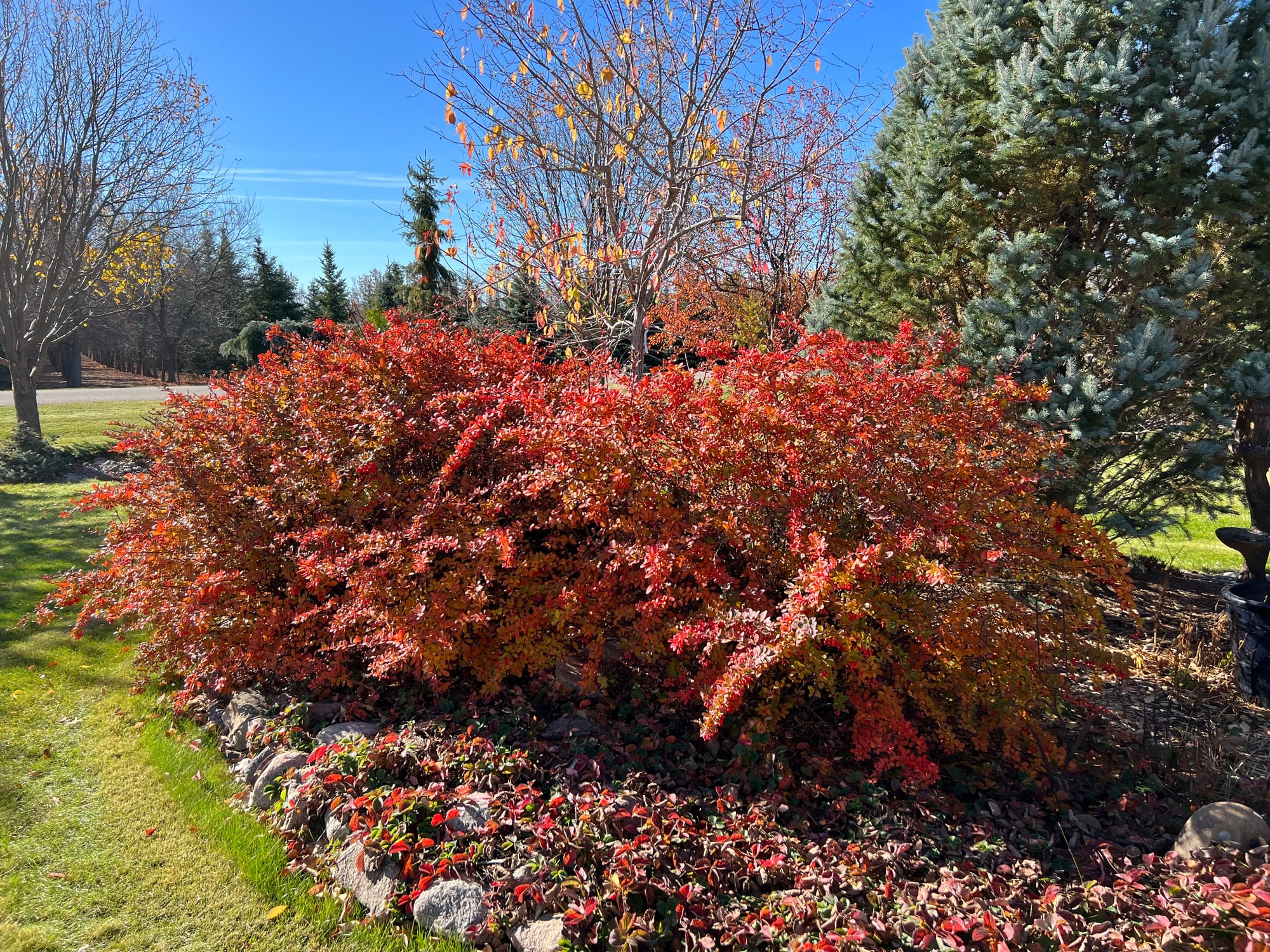
Prairie Radiance Winterberry Euonymus, Euonymus bungeanus ‘Verona’, Zone 3
Prairie Radiance is a unique smaller tree with a pinkish-red fall color and showy pink capsules. This plant will revert to a shrub if you allow the suckers to develop. This Euonymus tree is the perfect choice where a smaller tree is desired due to its size: 20'H x 15' W. It also has a showy pink capsule in the fall.
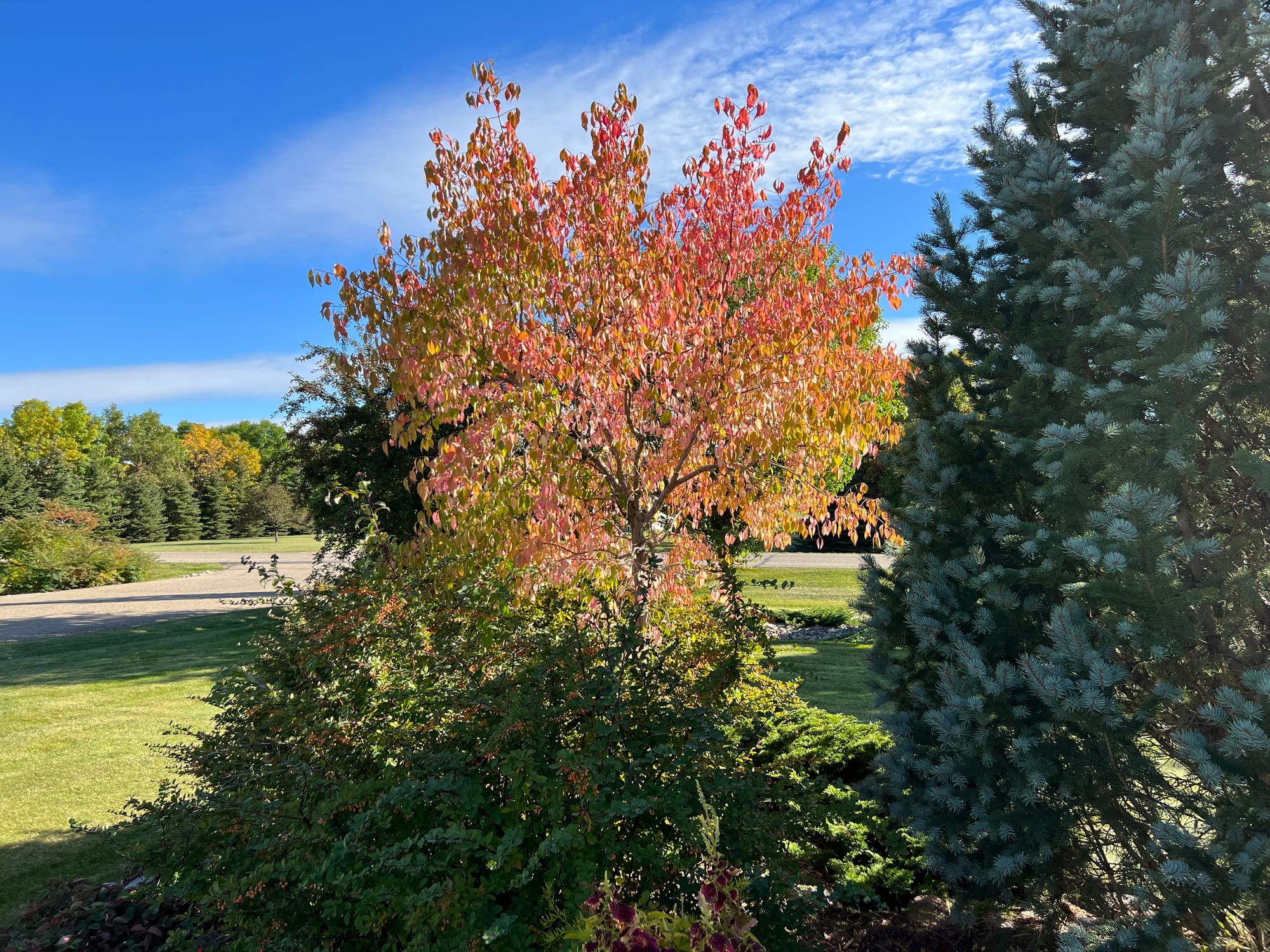
Columnar Colorado Blue Spruce, Picea pungens' Fastigiata', Zone 2-7
I'm a big fan of columnar plants. It could be because I have run out of space in most of our landscape beds, and upright plants allow me to pack more in 😊. This Columnar Colorado is doing quite nicely in this location. It has reached its labeled average size of 15'H x 3' W. But I have seen estimates of 20-foot heights by 5-foot widths, which is more likely for this tree's eventual size.
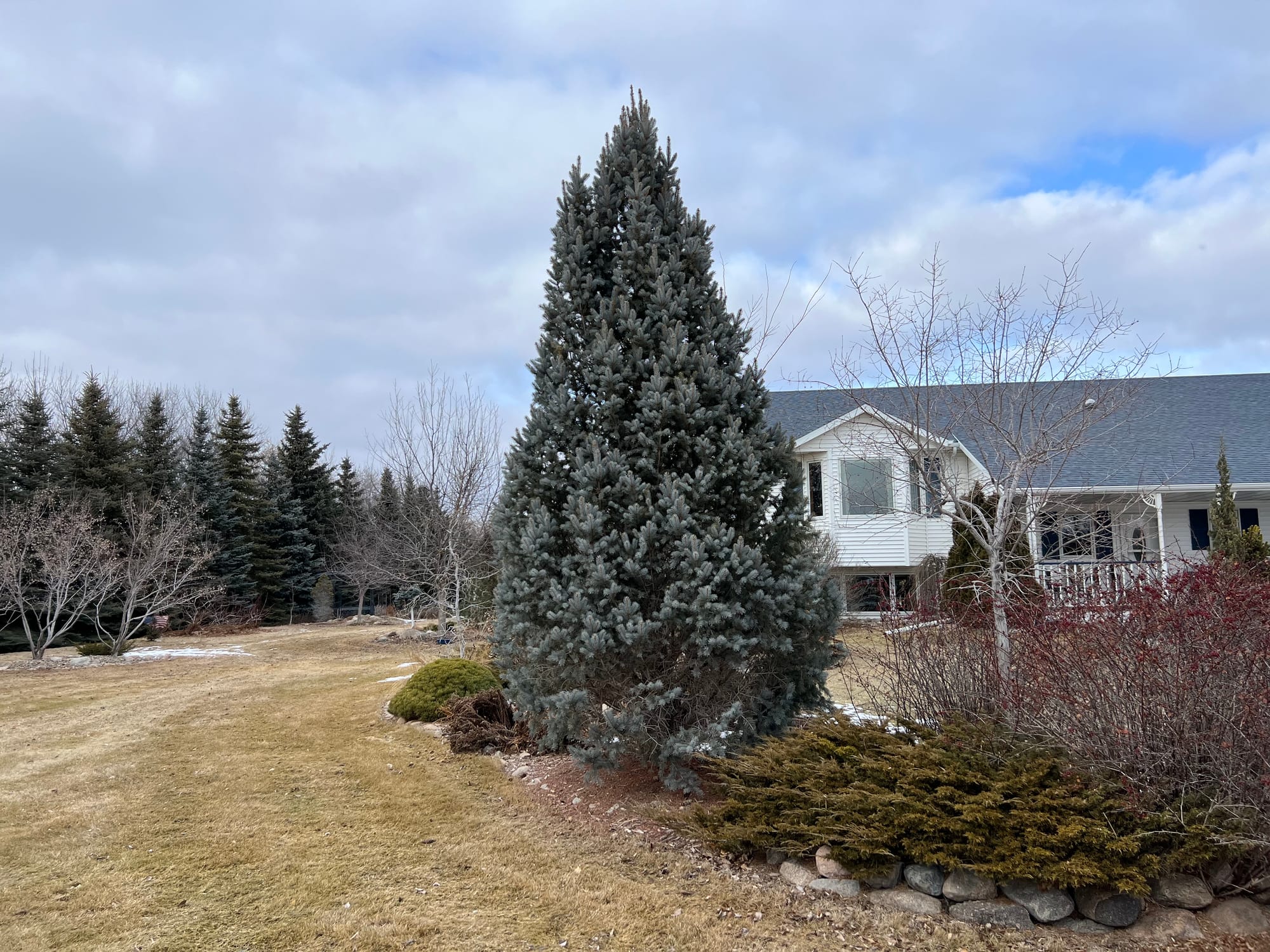
Siberian Iris, Iris siberica, Zone 3-8
I love the look of Siberian Iris in bloom. I think they also have a pretty nice "reedsy" leaf. The bloom period is very short, though. Cutting back the leaves each year when cleaning up is quite a chore. If leaving the task until late winter or spring, you will find that cutting the dead leaf debris is like cutting leather. Removing the tops in the fall is much easier while the leaf stems are still upright. But even though I know this, for some reason, I always wait until spring……
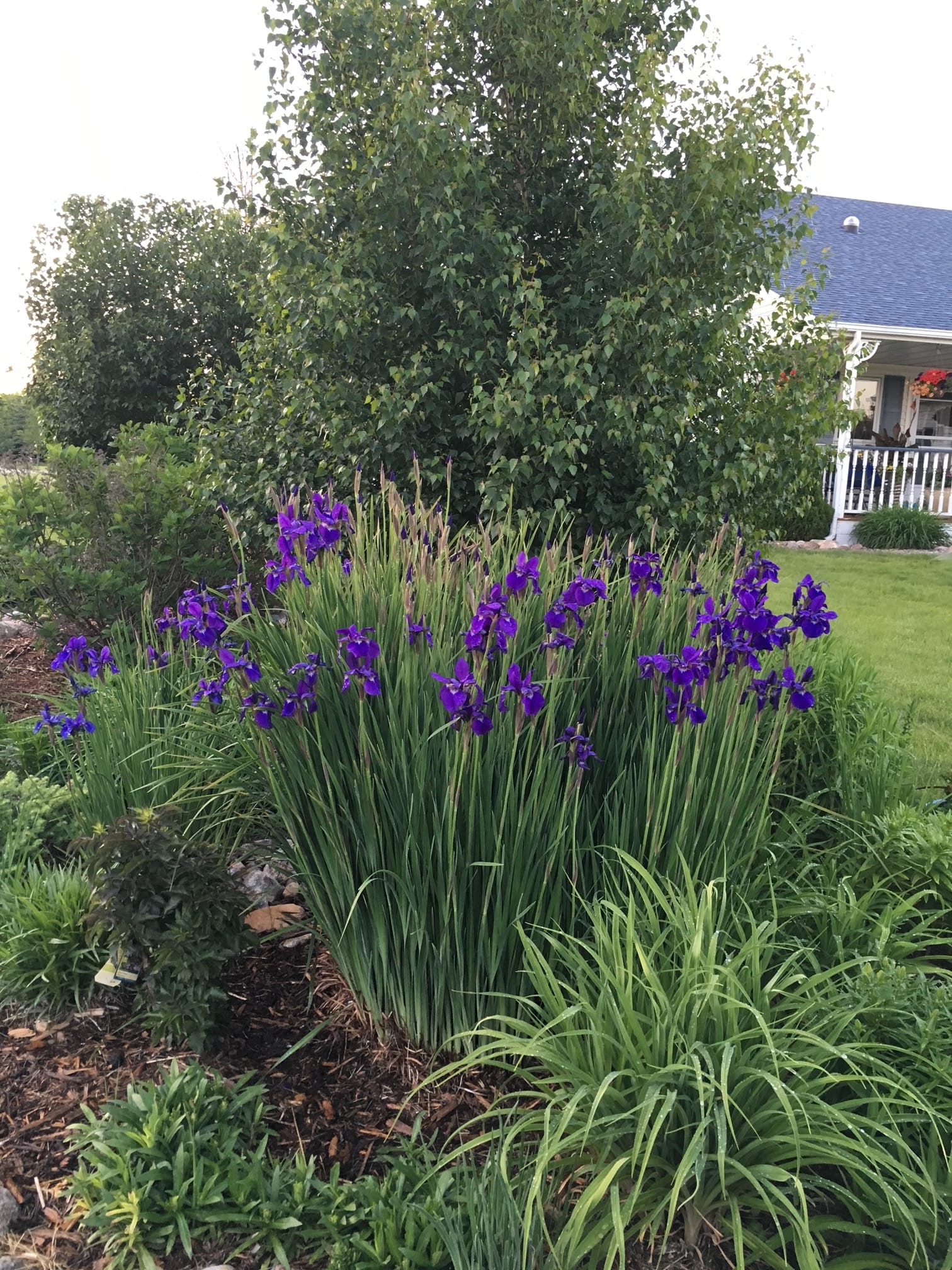
Dwarf Mugo Pine, Pinus mugo var. pumilio, Zone 3-7
I've kept this Mugo pine variety pruned as tight as a pincushion. This pruning process is quickly done in about 5 minutes each year in early summer. Just wait until the new candles have pushed out their new growth and remove 1/2 to 2/3 by shearing or pinching (pinching could take a while). Here's a video that examines this pine and several other Mugo Pine varieties.
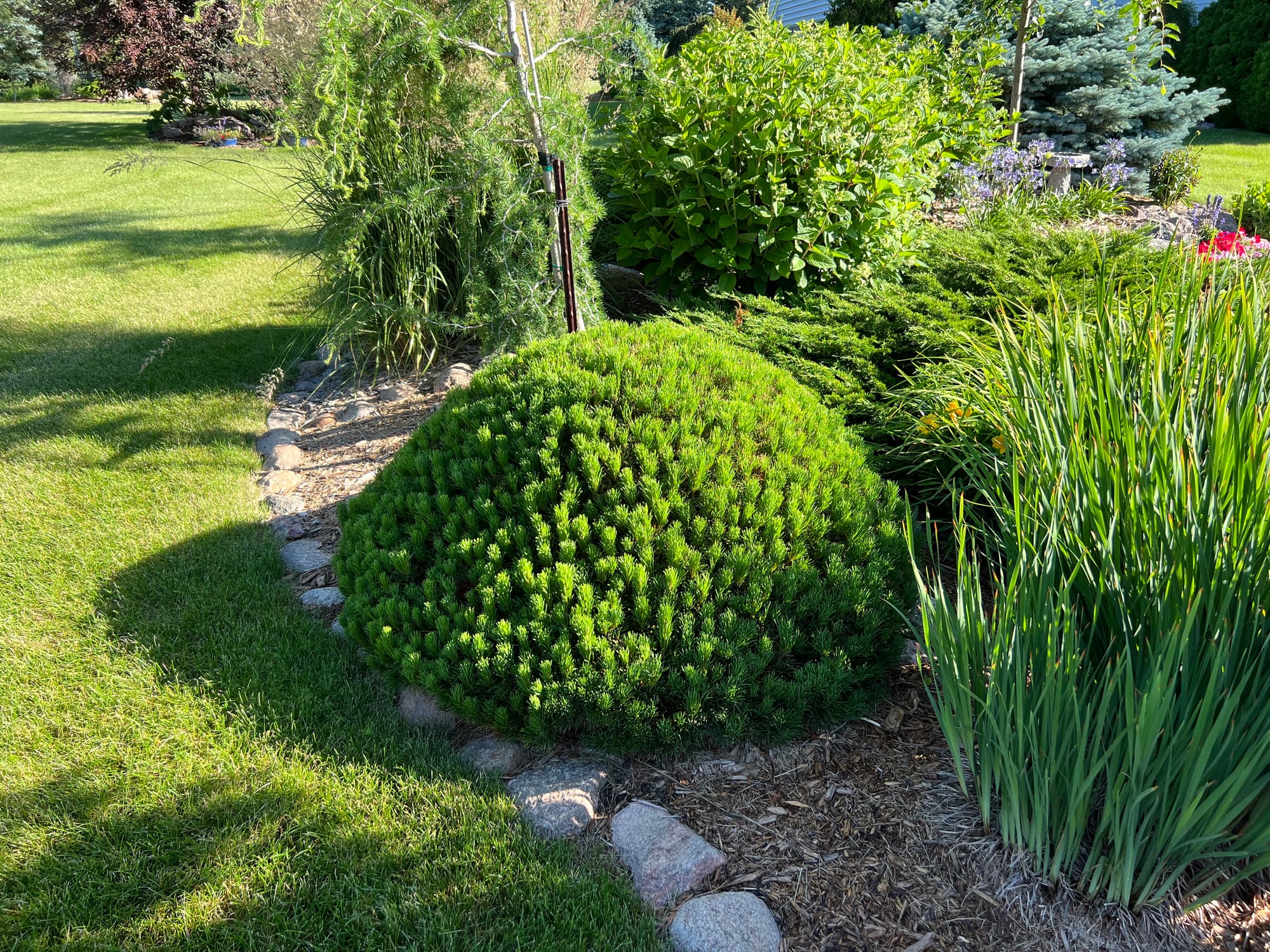
Horstmann's Recurved Larch, Larix decidua 'Horstmann's Recurva', Zone 2-8
I've learned over the years in my jobs where I have sold plants that the Larch is not for everyone. The larch genus is deciduous evergreens, so they lose their needles each fall. They have a beautiful yellow fall color before dropping. The Horstman's Recurved has a unique contorted branch structure, making it one of the most unique conifers you can grow. It's a great conversation piece in the landscape and well worth growing in your gardens.
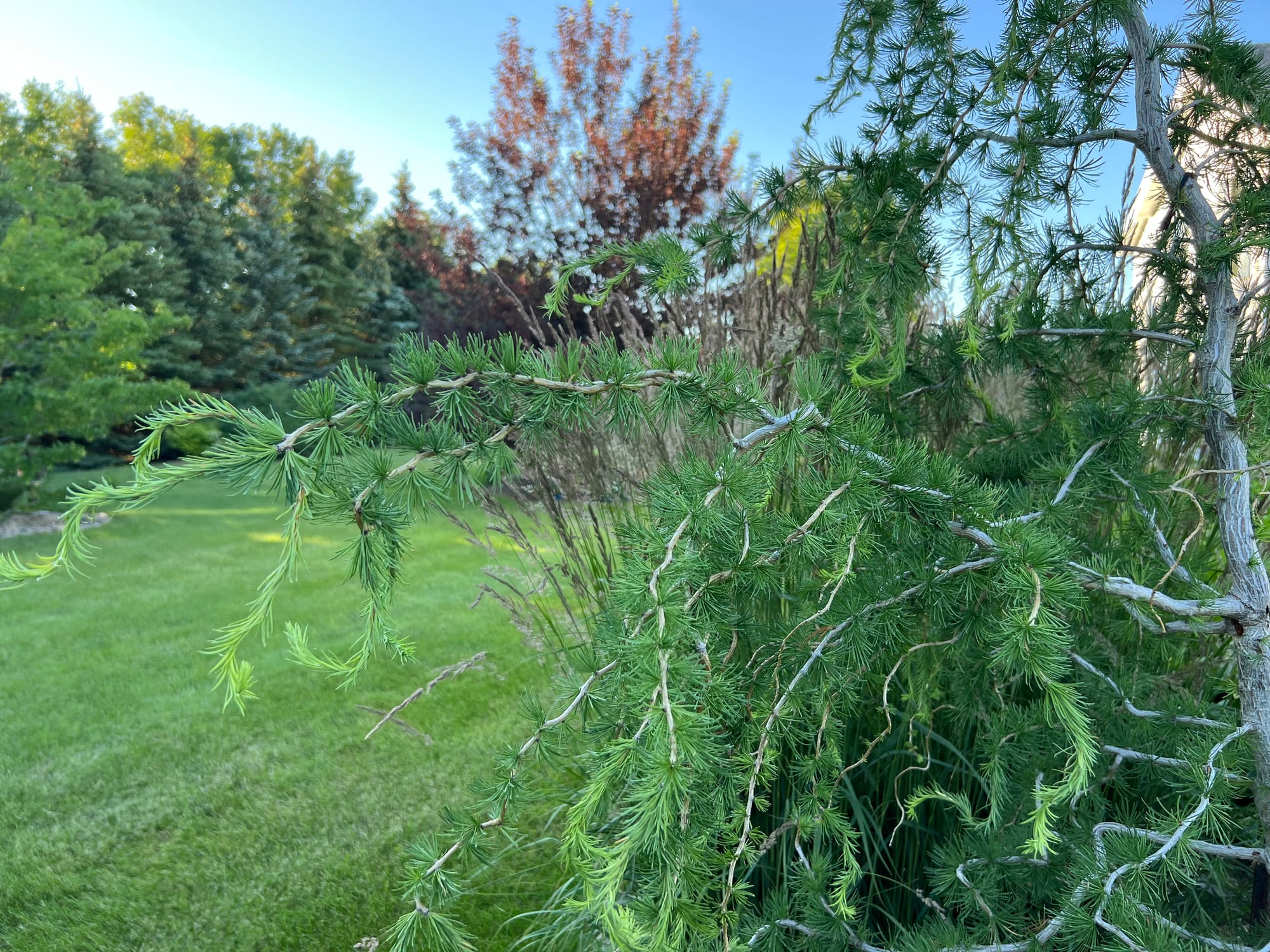
Karl Foerster's Feather Reed Grass, Calamagrostis x acutiflora' Karl Foerster', Zone 4-9
This is a durable and reliable ornamental grass. Check out this blog post where you can read more about this grass and several other great varieties.
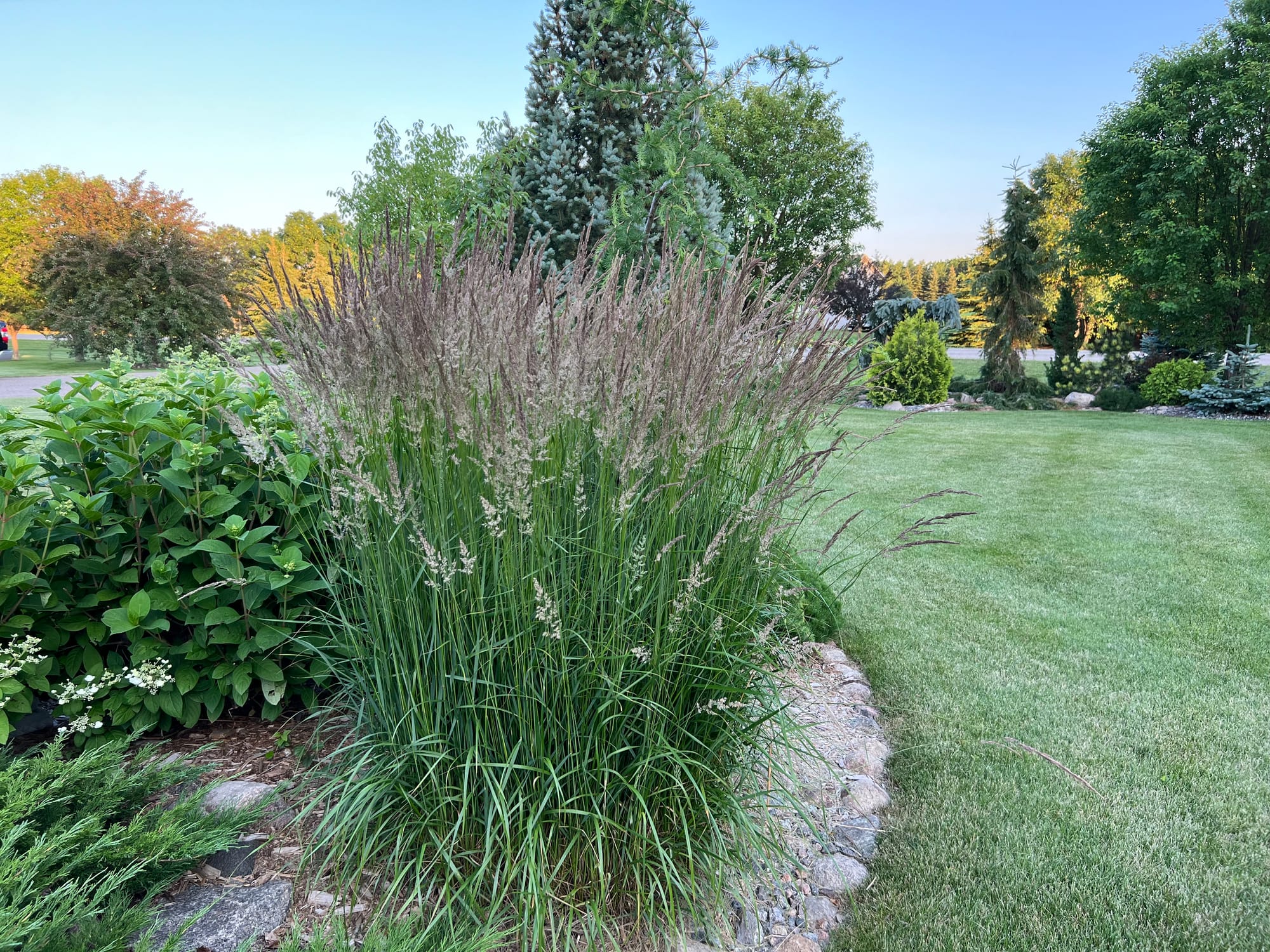
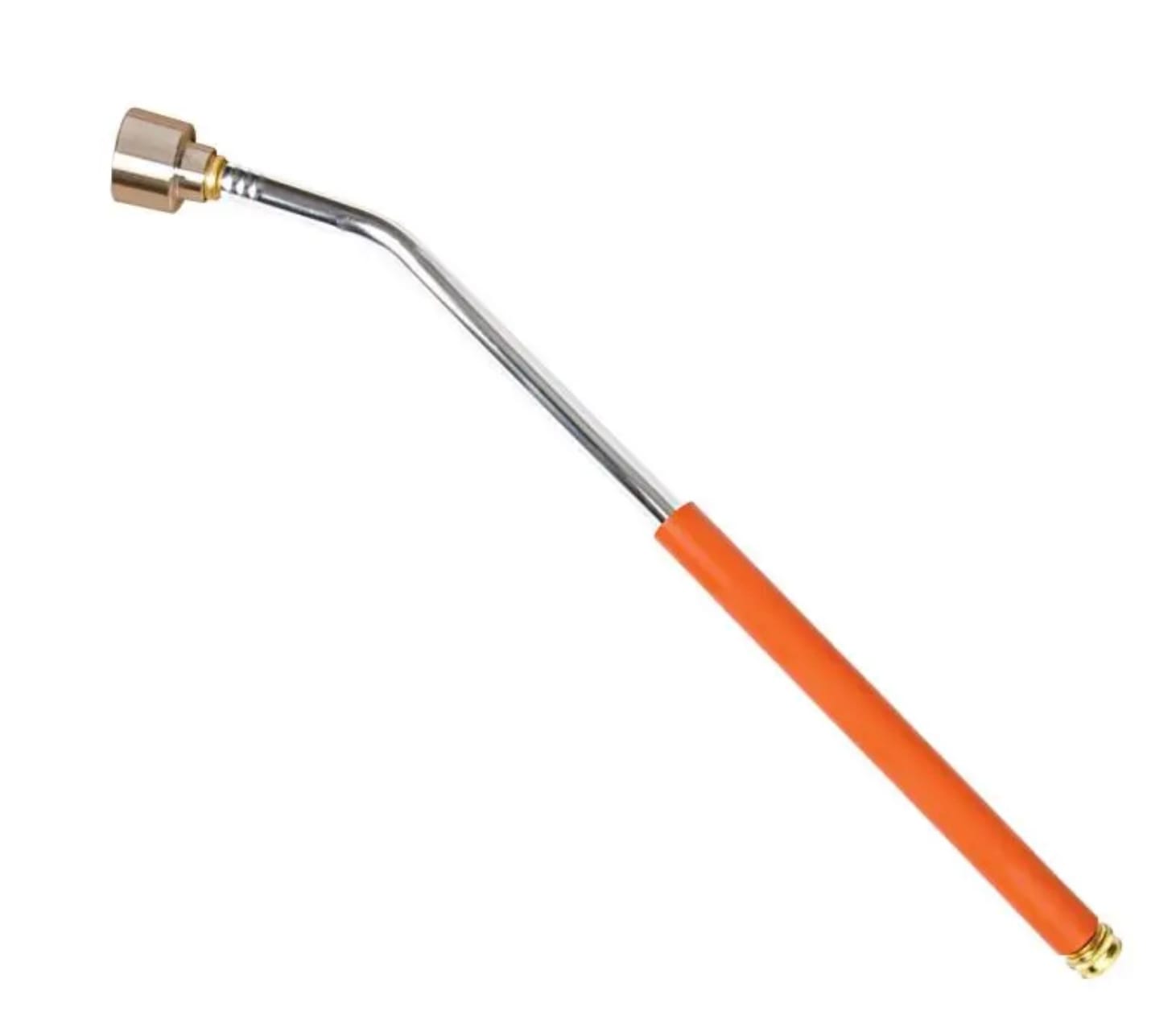
Watering Wand, Straight Grip, 24IN Length
Stainless steel nozzle with a foam grip
Garden Hike is supported by its audience. When you purchase through links on this site, we may earn a small commission at no additional charge to you.
Quick Fire Hydrangea, Hydrangea paniculata 'Bulk', Zone 3-8
What a great Hydrangea. It is the best shrub I am familiar with for attracting pollinators. I suggest doing light pruning in late winter each year to remove old flower heads and encourage new leaf growth in the spring for your best flower development. Last spring, I left the old flowers on the plant and enjoyed how the new growth intermingled with the dried flowers. So you can certainly let your shrub be.
But your flowering will be more spectacular if you do a light shearing each spring. This Hydrangea also rejuvenates quite well. I'll let the photos tell the rest of the story here. If you like Hydrangeas, here's a video that highlights several other varieties of this excellent genus of plants.
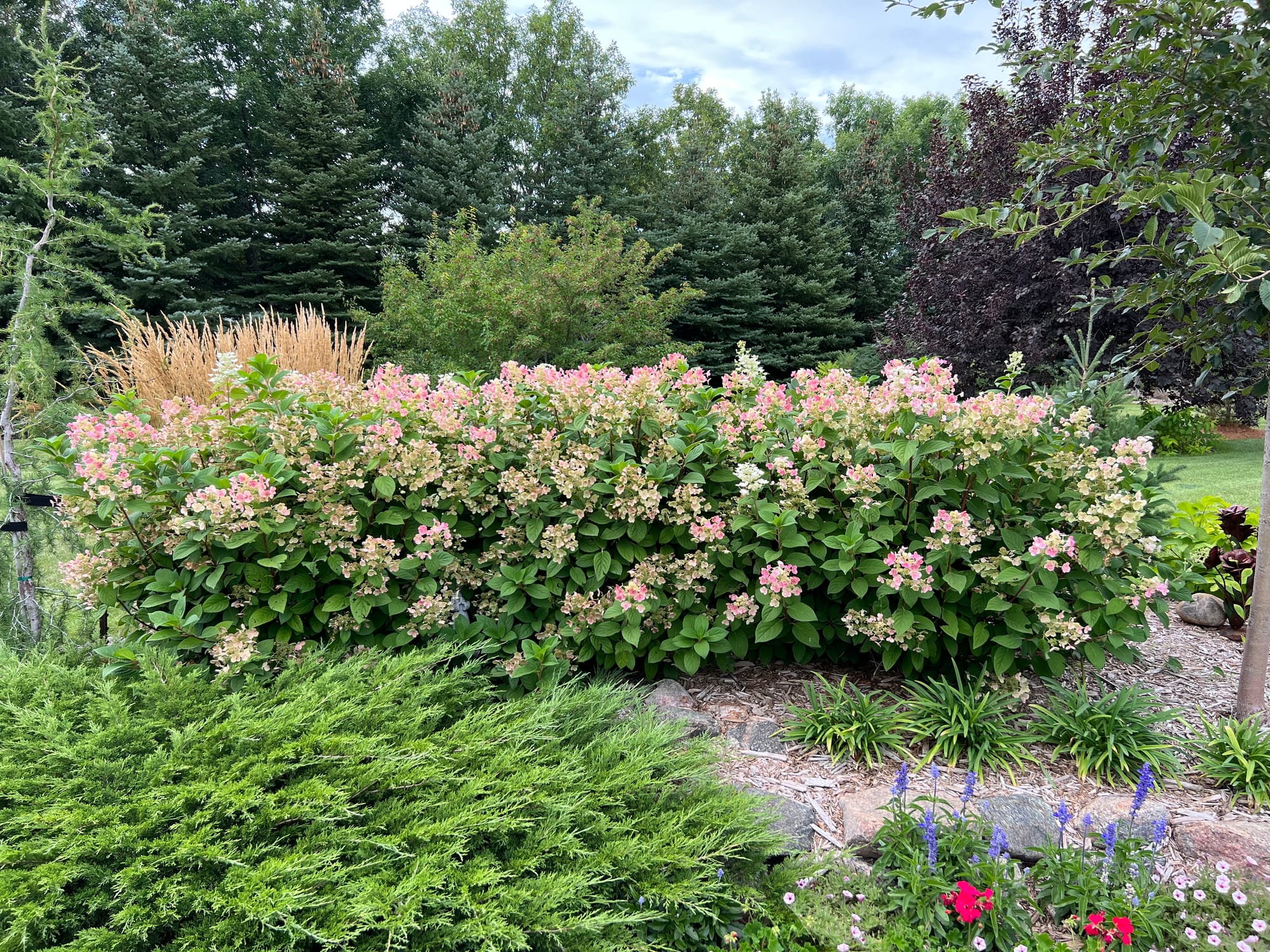
Dakota Pinnacle Birch, Betula platyphylla' Fargo', Zone 3
Losing not just one but three of the main trees in front of our house was quite a disappointment. They were only about ten years old. Birch suffered severe dieback across our state that winter, and since we were hosting our son's wedding that summer, I decided on removal rather than pruning. Dakota Pinnacle Birch is a broad pyramid introduced by North Dakota State University, where I received my Horticulture degree.
So, not only was I disappointed at the loss. I was also quite surprised. My preference now for an upright Birch is the Parkland Pillar, which is a narrower selection.
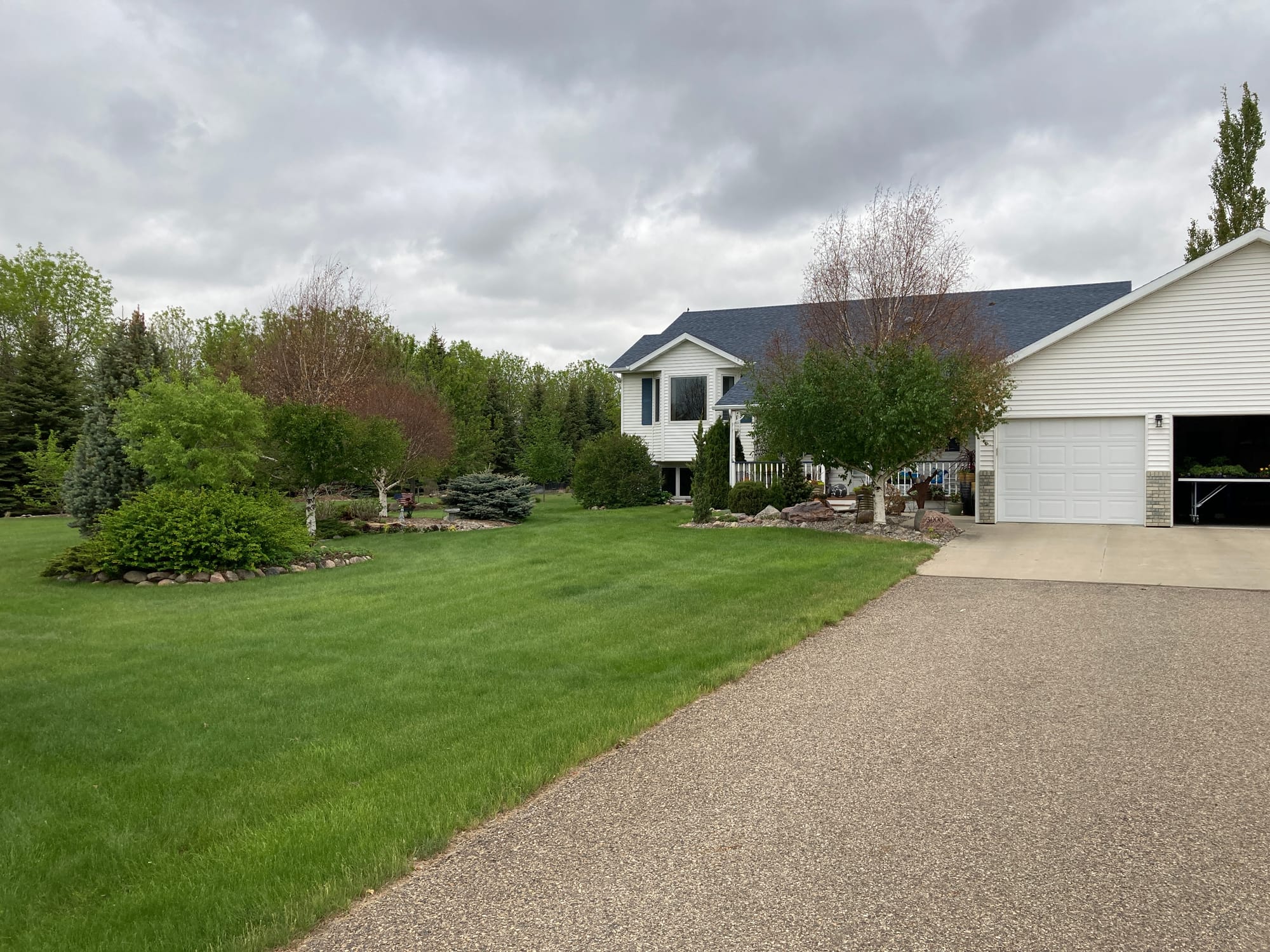
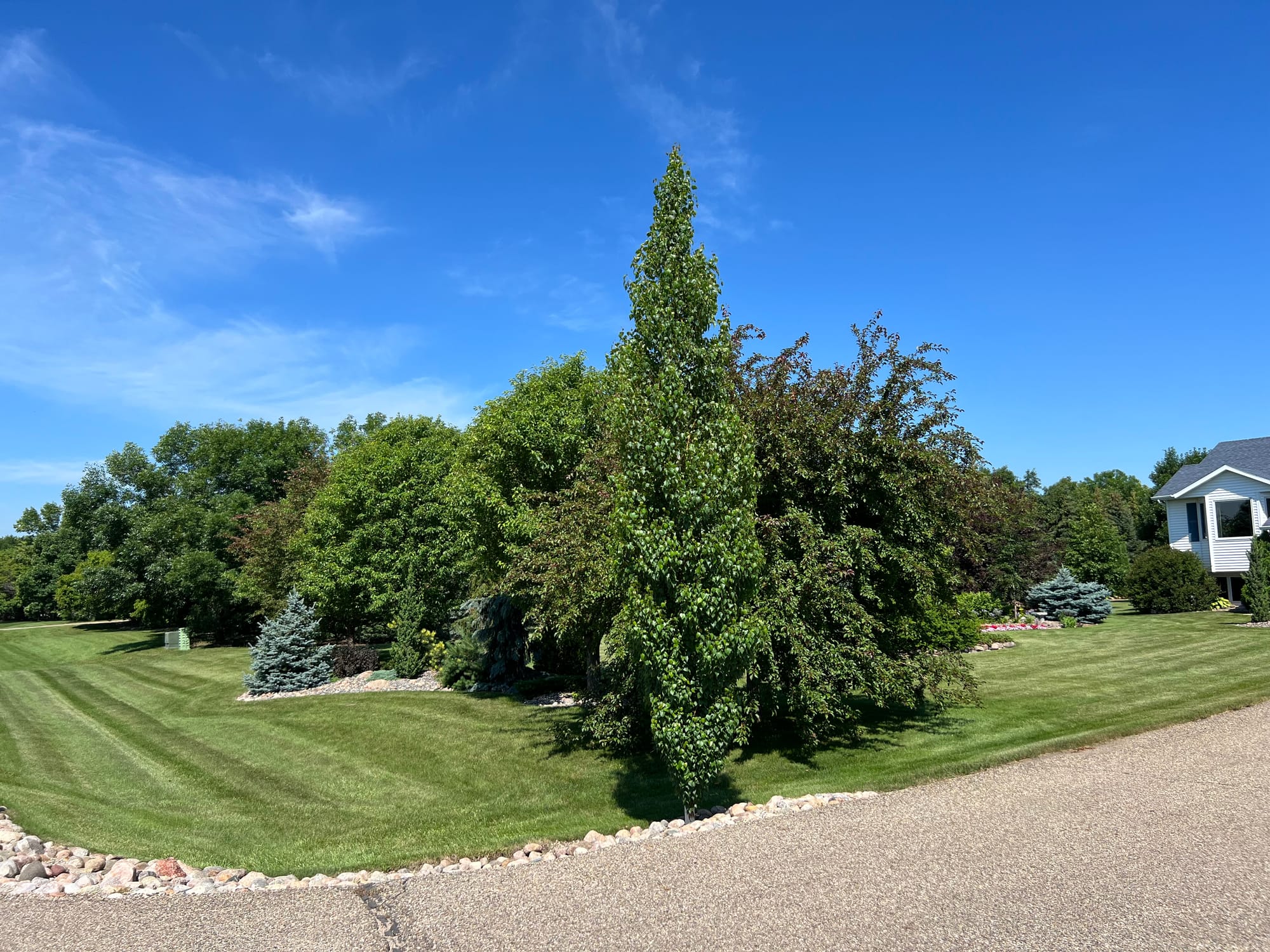
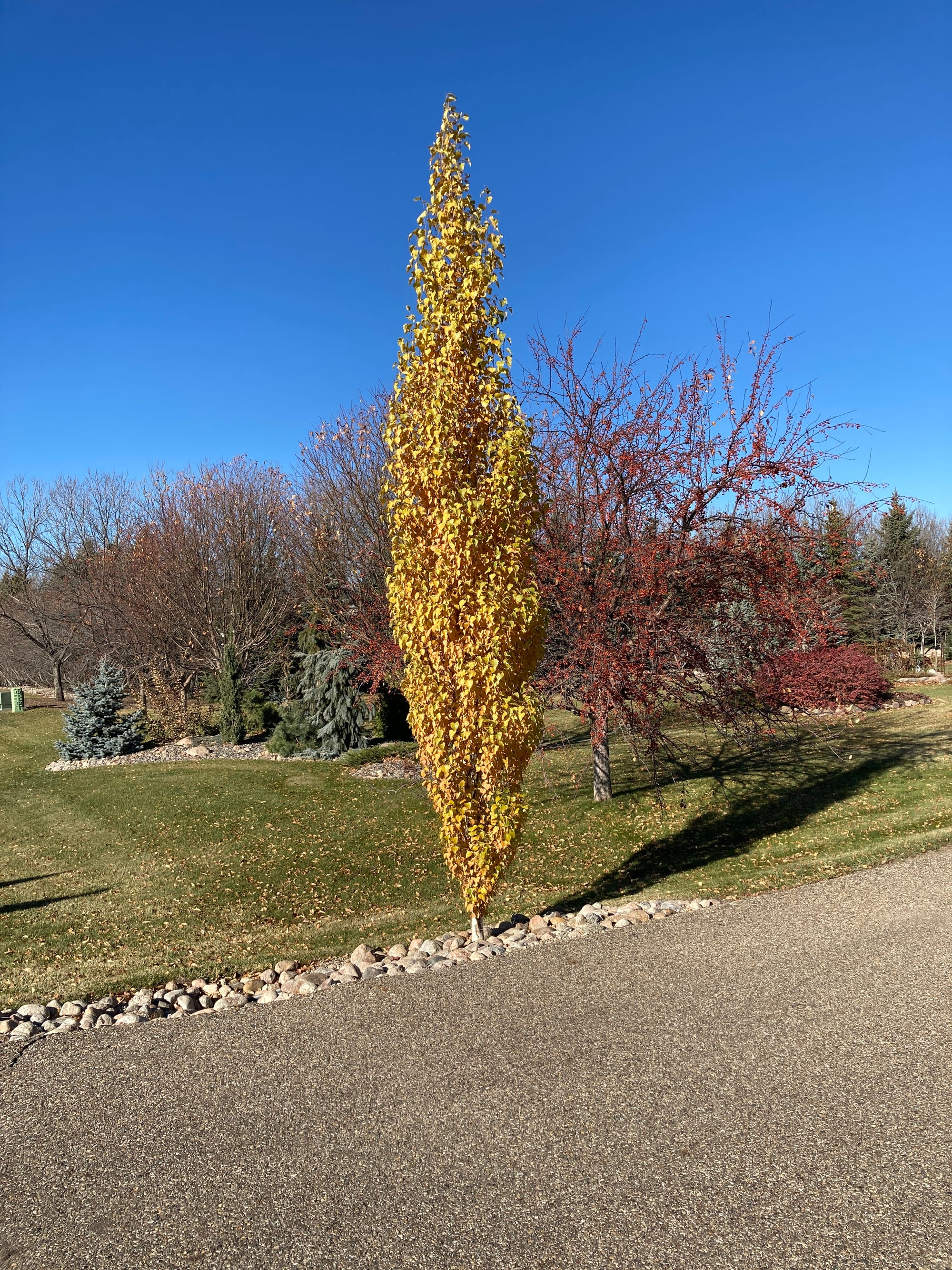
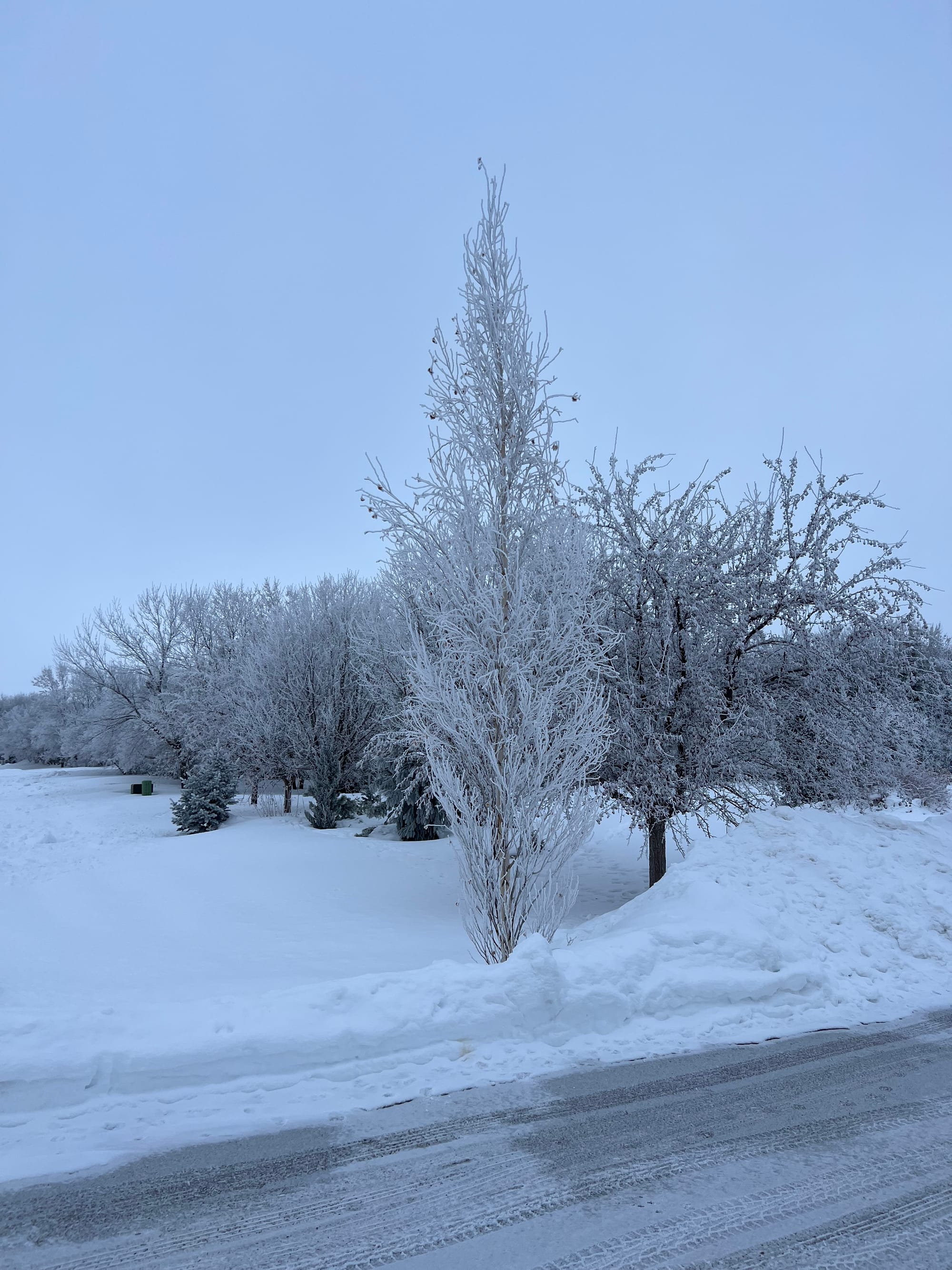
Parkland Pillar Birch, Betula platyphylla 'Jefpark', Zone 3-7, (Summer-Fall-Winter)
Thanks for stopping by Garden Hike!
Kevin
A.M. Leonard has an excellent selection of tools and gardening supplies! Enter discount code GARDENHIKE10 when checking out to receive 10% off any order. Click the banner below to enter their online store.

Garden Hike is supported by its audience. When you purchase through links on this site, we may earn a small commission at no additional charge to you.
